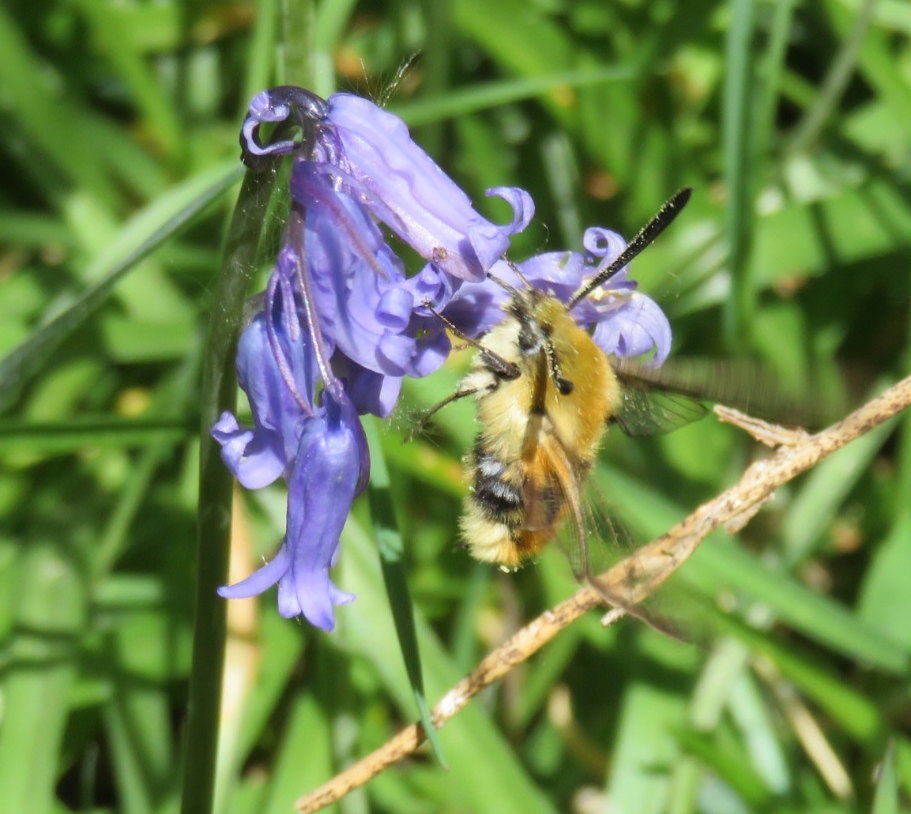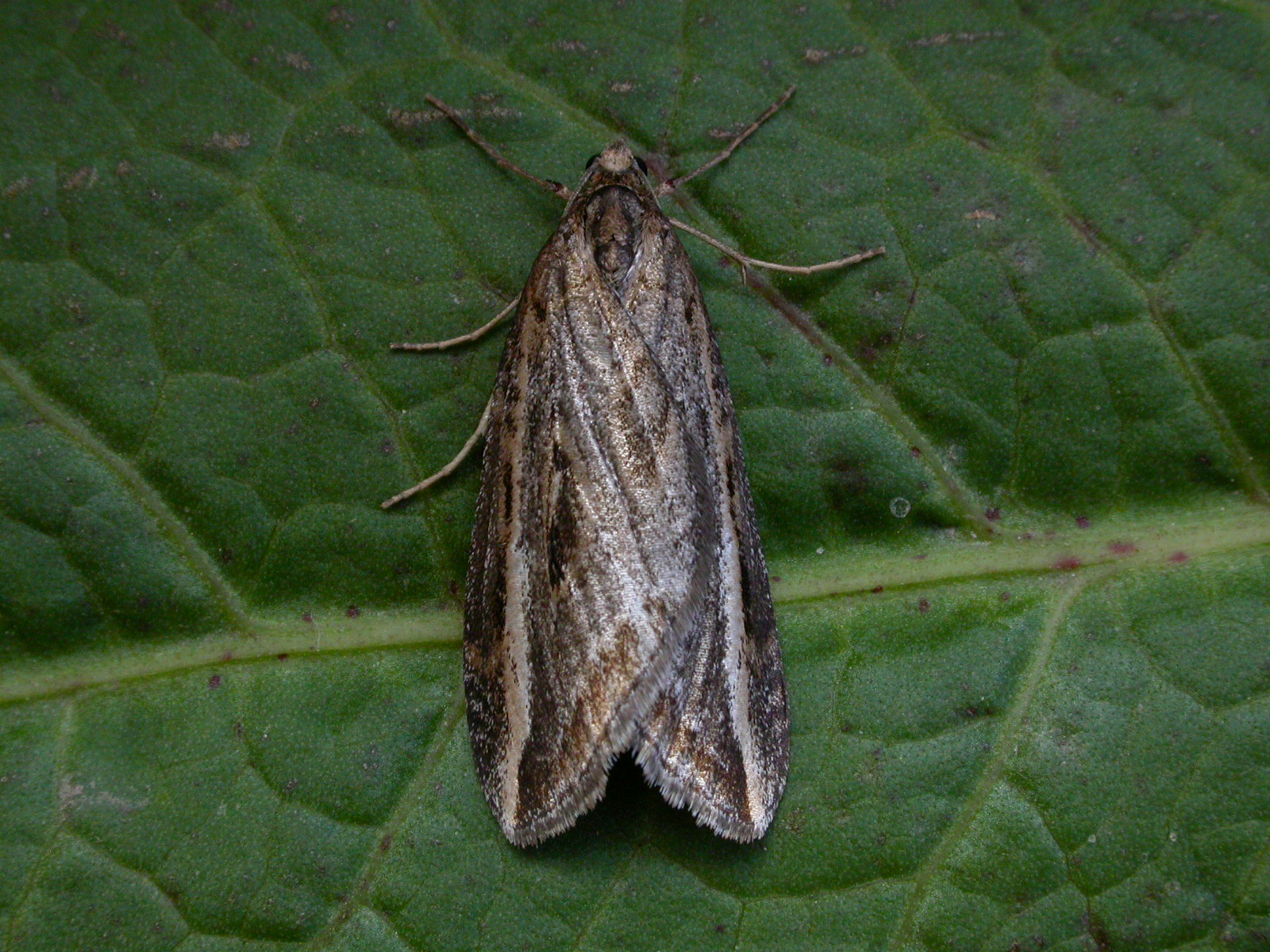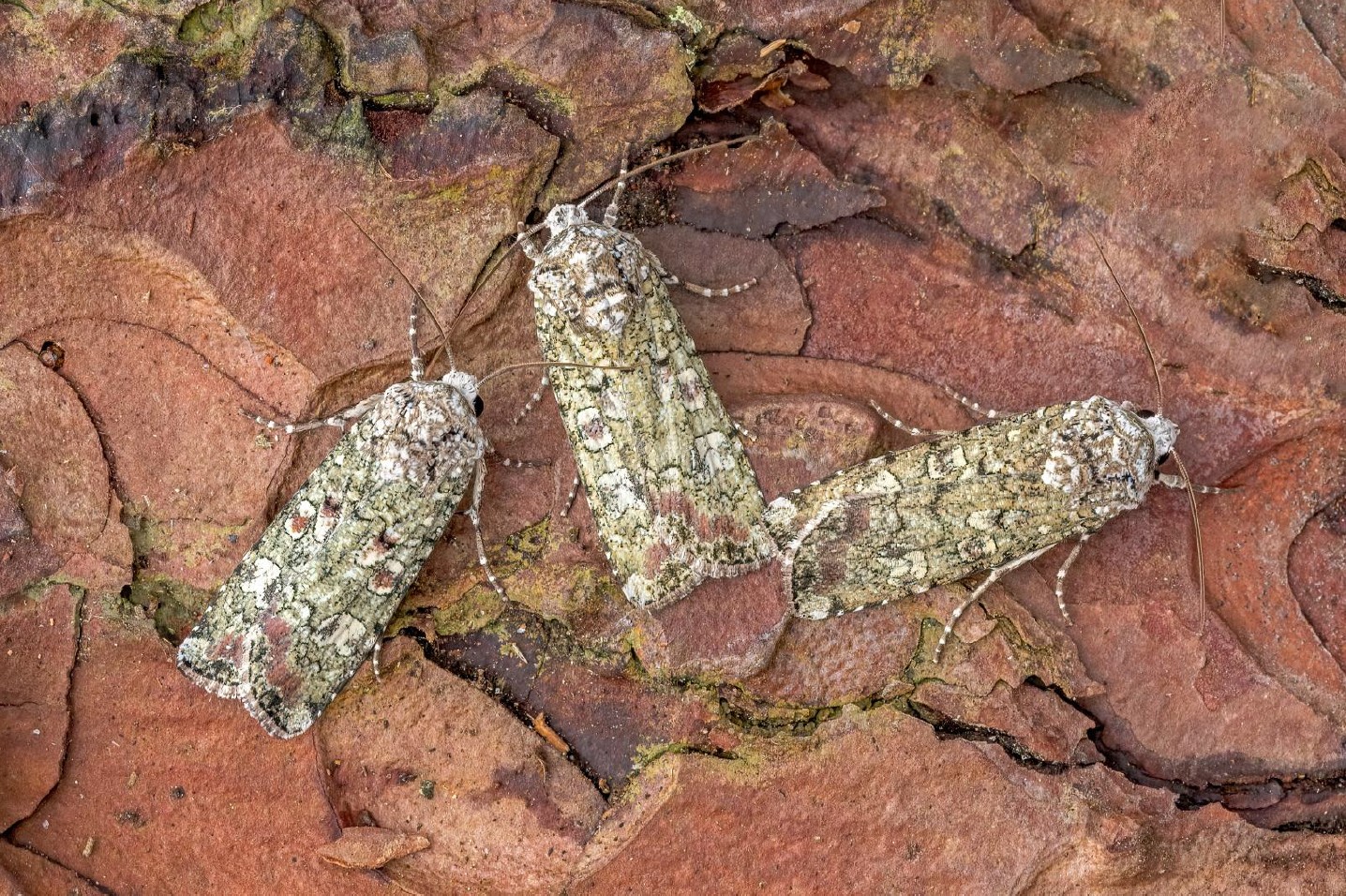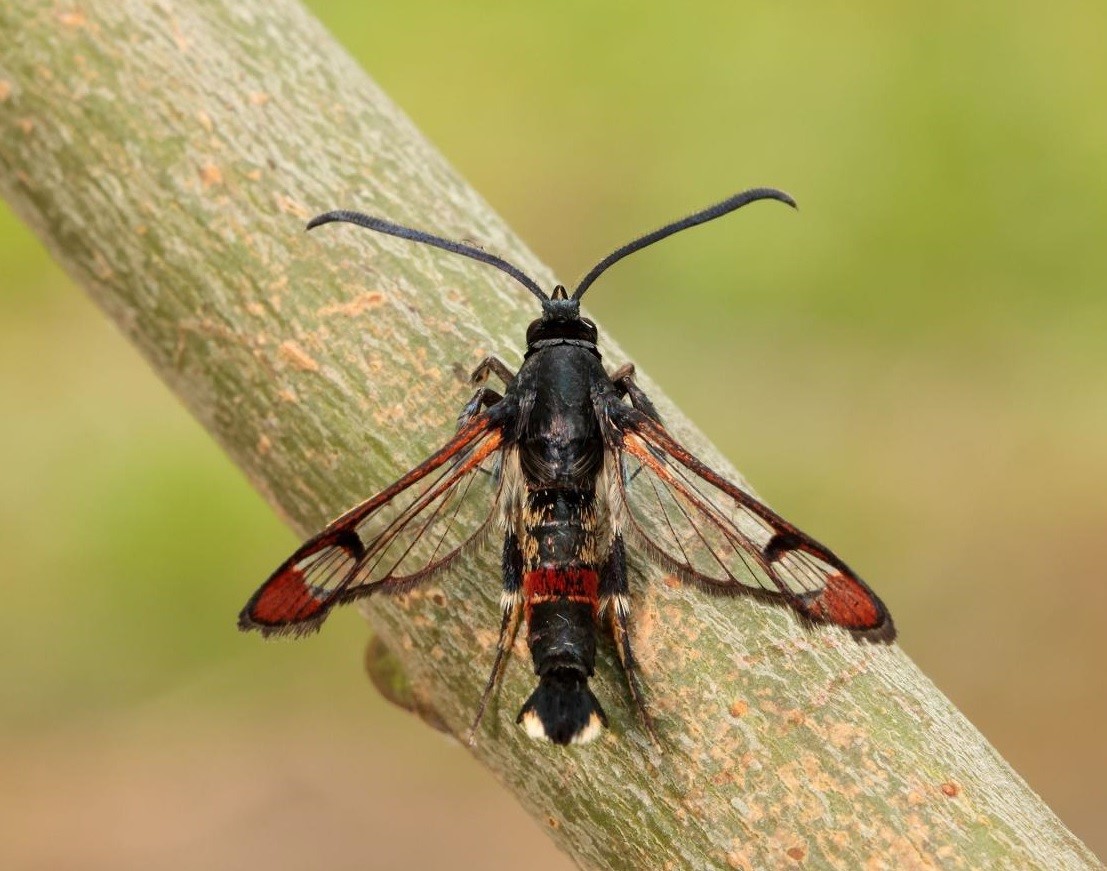This is not a moth that anyone often sees despite the fact that it is day flying. A good mimic of the bumblebee, with its hairy body and clear wings, the Narrow-bordered Bee Hawk-moth is able to hover in front of a flower to drink nectar. It flies rapidly and directly to the next flower in a similar way to its relative the Hummingbird Hawk-moth. While flying its large, clubbed antennae instantly show that this is a moth and not a bee. The adults are on the wing from late April to early July with most sightings being in the first week of June. The best time to see them is on warm, still mornings when their buzzing flight often gives them away.
Although the moth has been found in most parts of Scotland, most recent records are from the Highlands, particularly the west coast. We have 19 records of adults in D&G the most recent being eight years ago but with the records stretching back to 1860 with long gaps (from 7 to 26 years!) between sightings. Most records (9) are from Wigtownshire with 7 from Dumfriesshire and 4 from Kirkcudbrightshire.
The key to this species distribution and the easiest way to find it is to find its preferred habitat. The caterpillars only feed on Devil’s-bit Scabious and then only where it is abundant in short cattle-grazed (sheep selectively eat scabious) natural grassland where the rosettes of leaves can develop exposed to the light. There also needs to be a plentiful supply of nectar plants such as bugle, bluebell, lousewort, ragged robin and bird’s-foot trefoil (although one of records gives rhododendron as a nectar source). This type of species-rich habitat, particularly ‘Purple Moor-grass and Rush Pasture’, is quite restricted today although it is interesting to note that the moth does appear to be expanding its range in the far north.
The moth lays single eggs on the underside of the Scabious leaves (there can be more than one egg laid on the same leaf). The young caterpillars feed at night beneath the leaf and eat characteristic round holes through the leaf either side of the midrib which can easily be seen from above. As the caterpillar grows it also eats notches into the edge of the leaf or even whole leaves. The pale green caterpillar is instantly recognisable as it has the ‘horn’ tail of hawk-moths and as it grows older it has purple dashes and a medium line along its body. Adults can be on the wing over a ten week period therefore the caterpillars, although rapidly growing, can be found from mid-June through July and August.
This is a rare species and appears in the UK’s Biodiversity Action Plan and is on the Scottish Biodiversity List. In the current Butterfly Conservation’s Scotland Conservation Strategy it is regarded as having a Medium Priority threat level with some action required at some sites or landscapes. It might be that the Narrow-bordered Bee Hawk-moth has been lost from D&G in a similar way to the Marsh Fritillary butterfly which lives in a similar habitat and shares the same food plant. It may occasionally invade D&G at intervals of decades although it is not known for any form of migration. It could also be that it is in fact still resident and even locally common, just being over-looked.
There is a real chance of finding this moth by strolling through some of this short acidic grassland where it lives on sunny mornings looking for the adults. However, there is an even better chance of searching scabious rosettes for holes or nibbled edges and checking for the caterpillars beneath the leaves. Finding this beautiful moth again would be very exciting and a great bonus for our region.




